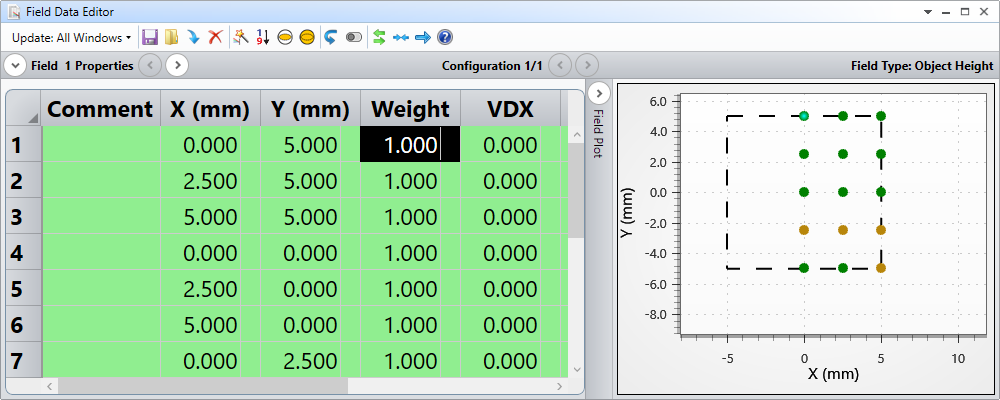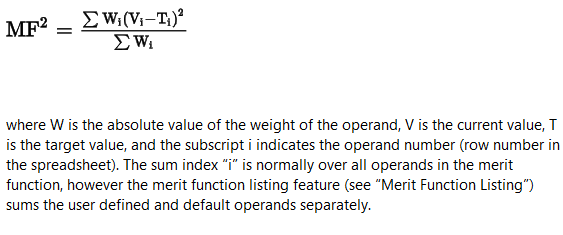From the help files:
XY-Symmetric: Similar to Y-Symmetric, except there are 9 field points used. The 5 Y-Symmetric points are used, and -1.0, -0.7, +0.7, and +1.0 are added in the X axis direction only.
It is also highly recommended when tolerancing non rotationally symmetric lenses...that user defined fields be used.
Are both negative and positive field points really needed along both x and y axes if your asymmetry is only about one axis? If you designed the system with only positive x field points, for instance, you still need to tolerance it with both negative and positive x field points?
In addition to asymmetry, what if you have distortion? Aren’t edge and corner points needed as well then?
The XY Symmetric option assigns a weight of 4 to the on-axis field. Can anyone explain the basis of this weighting? How does that weighting need to be adjusted if more than 9 fields are used or if some don’t lie on either axis (user-defined fields)?
Thanks!






